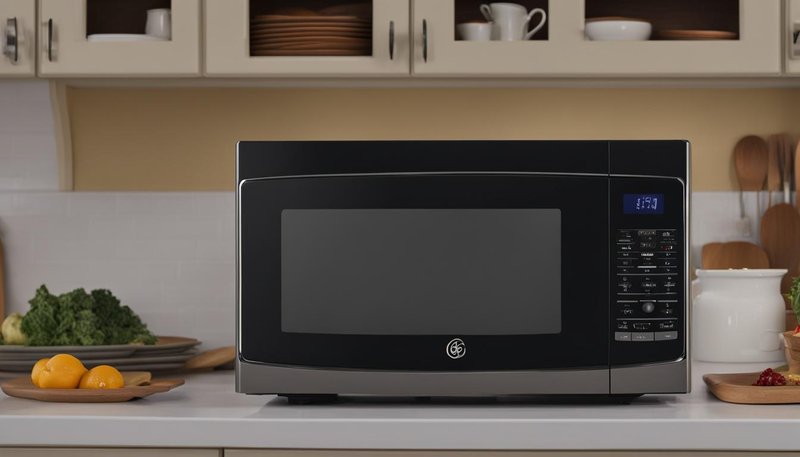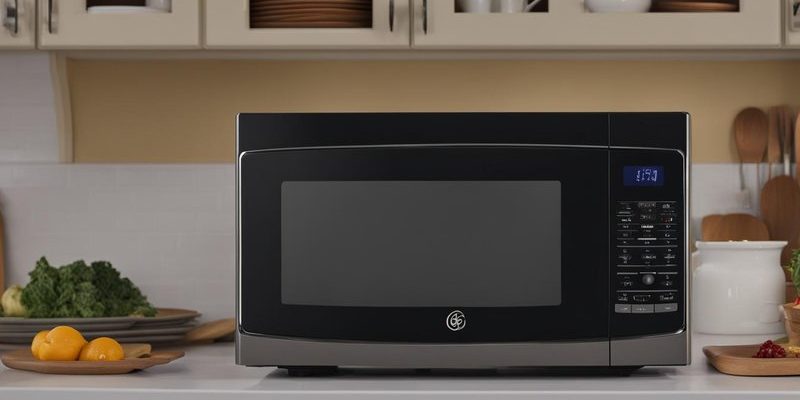
Microwaves are such a blessing in our fast-paced lives, making meal times much more manageable. However, like any electronic device, they require a bit of care and attention. The error code E3 can often be traced back to simple issues like moisture buildup or even dust in the wrong places. By understanding what causes this error and how to prevent it, you’ll save yourself a lot of time and hassle. Let’s dive into some practical ways you can keep your GE microwave running smoothly and error-free.
Understanding Error Code E3
Before jumping into preventive measures, it’s crucial to understand what error code E3 actually means. Essentially, this code is your microwave’s way of letting you know there might be an issue with the touchpad or the control board—think of it like a smoke alarm for your microwave’s brain. The control board is like the central nerve system that manages all the functions, while the touchpad lets you communicate your cooking desires to the microwave. When there’s a hiccup in this communication, the error code E3 might appear.
So, why does this happen? Often, it’s due to moisture. Imagine trying to read a book in the rain; not easy, right? Similarly, when moisture gets into the touchpad or control board, it can disrupt the signals. Other times, it might be because dust and grime have decided to have a party inside your microwave, blocking the proper connectivity. In some cases, the culprit might be a more technical issue, such as faulty wiring or worn-out components. While this might sound a bit overwhelming, don’t worry. We’ll cover how you can prevent these hiccups.
Now, knowing what causes these issues, you can take proactive steps to ensure they don’t happen. This involves regular cleaning, paying attention to how you use your microwave, and keeping an eye on any signs of trouble. If you notice any strange behavior, it might be time to consult a professional or do a little troubleshooting of your own.
Regular Maintenance and Cleaning
Here’s the deal: your microwave works hard, so showing it some love with regular cleaning can make a world of difference. Cleaning doesn’t just make it look good; it helps maintain its functionality. Dirt, grease, and food particles can accumulate in and around the touchpad, causing issues over time. Clean the exterior and the control panel regularly with a soft, damp cloth. Avoid using harsh chemicals—think of it like using mild shampoo instead of something harsh on your hair.
Now, don’t forget the inside! If food splatters are left unchecked, they can lead to moisture buildup, which, as we know, isn’t good for the touchpad. Use a microwave-safe bowl filled with water and a slice of lemon. Heat it for a few minutes to create steam, which helps loosen any stuck-on grime. Afterward, wipe it clean with a cloth. This simple step can keep your microwave fresh and functioning well.
Finally, don’t underestimate the power of a routine check for dust in the vents and around the edges. Think of it as dusting your bookshelf to prevent allergies. By keeping these areas clean and clear, you can help ensure proper ventilation, which is crucial for your microwave’s health. Regular attention to these small details can prevent larger issues down the road.
Proper Usage and Handling
You might be wondering, is there a right way to use a microwave? Absolutely! While it seems straightforward, using your microwave properly can extend its lifespan and prevent error codes. Start by ensuring you’re using microwave-safe containers. Glass or microwave-safe plastics are your best bets. Metal containers or foil can cause sparks and damage the microwave’s interior or components—kind of like throwing a wrench into a machine.
Also, be mindful of the cooking times and power settings. Avoid running your microwave empty because this can cause it to overheat and damage the control board. It’s like revving a car engine without actually driving—it doesn’t do your car any good. If you consistently use your microwave on high settings, give it a break now and then. Just like giving your muscles a rest between workouts, this can prevent overheating.
Another tip is to avoid slamming the microwave door. While this might seem harmless, it can actually harm the latches and affect the control panel over time. Gently closing the door ensures the sensors and control board remain in good condition. By treating your microwave with care, you’re less likely to encounter those unexpected error codes.
Professional Inspection and Troubleshooting
Of course, even with all the care in the world, sometimes things go awry. If you keep seeing that E3 error code despite your best efforts, it might be time to call in the experts. A professional technician can provide a thorough inspection and identify any underlying problems you might have missed. Think of it like going to a doctor when over-the-counter remedies aren’t doing the trick.
If you’re a bit of a DIY enthusiast, there are a few steps you can take before calling in the pros. First, try a hard reset by unplugging the microwave for a few minutes and then plugging it back in. Sometimes, it just needs a break to reset its systems, much like restarting your smartphone when it acts up. However, if the issue persists, it’s safer to seek professional help rather than attempting more complex repairs on your own.
Finally, keep your receipts and any warranty information handy. If your microwave is still under warranty, you might be able to get repairs at little or no cost. Staying informed about your options can save you both time and money, ensuring your microwave is back to its best in no time.
In summary, while the GE microwave error code E3 can be a bit of a nuisance, it’s mostly manageable with some proactive care and maintenance. Understanding the causes of the error and taking regular preventive measures can go a long way. Remember to clean regularly, use your microwave properly, and don’t hesitate to seek professional help if needed. By following these steps, you’ll keep your trusty kitchen companion running smoothly and efficiently, saving you both time and frustration.
Your microwave is an essential tool in the everyday hustle of meal preparation. By giving it the attention it deserves, you can prevent those pesky error codes and ensure it remains a reliable part of your kitchen for many meals to come. Who knew a little TLC could go such a long way in keeping your microwave healthy and happy?
